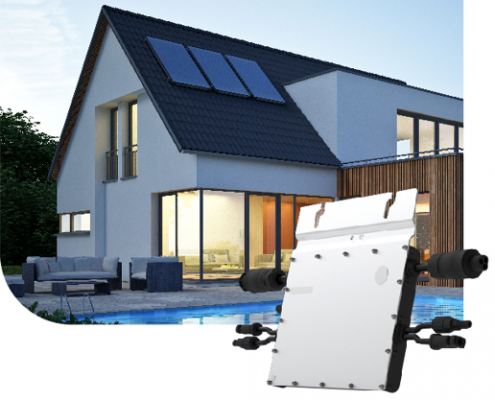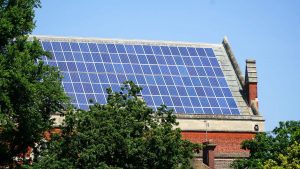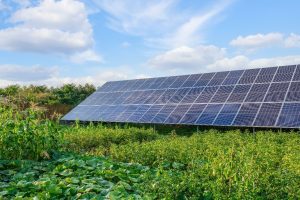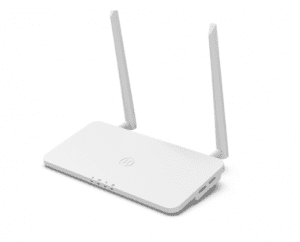Why small home solar systems
sense in 2022

Download leaflet: A practical guide to your home solar installation
As world energy demands grow (and energy prices steadily increase), solar energy is becoming an increasingly popular option for homeowners. Whether to offset short-term price gouging or to reduce reliance on fossil fuels in the long term, solar energy is a viable – and increasingly affordable – choice for many people looking to better manage their energy costs.
Most people think you need a full roof of solar panels to reap the benefits of solar energy, but that’s not always the case. Small residential solar systems can provide a homeowner with some or all of the energy necessary for their home, and they come in a variety of configurations to suit any budget. These include balcony solar systems, window solar systems, and even courtyard solar systems.
With electricity prices rising across Germany as well as the rest of Europe, and increasingly accommodating policies found in many European countries like Germany and the UK, small residential solar systems just make sense. In this article, we’ll discuss what small home solar systems are, their benefits, and how to get started with this type of renewable energy system (with step-by-step specifics in our leaflet).
Let’s dive in.
- What are small home solar systems?
- Why small home solar systems make sense in 2022
- The current global energy market
- Rising electricity prices
- Accommodative policies
- How Hoymiles is helping with small home solar systems
- The benefits of balcony solar systems
- Energy independence
- Short payback period
- No need to report or register (in Germany or Austria)
- Simple, plug-and-play installation
- Safe and homeowner-friendly
- How to plan your balcony solar panels
- Calculate your energy usage
- Get the necessary components
- Solar panels (with suitable power output)
- Microinverters
- Step-by-step installation guide
- Choose Hoymiles for small home solar systems
- 4-in-1 microinverters
- Standard warranty
- Next-generation monitorin
WHAT ARE SMALL HOME SOLAR SYSTEMS?
Put simply, small home solar systems are solar energy systems that are sized specifically for low-power residential use. While there is no definitive capacity limit, these systems generally have a capacity of 800kW or less, and don’t need to be permanently fixed to a roof or building.
This tremendously reduces the logistical and financial barriers to solar energy installation. Additionally, the lower power requirement makes small solar systems an attractive option for those living in apartments or condos where a traditional rooftop system might not be feasible.
Small home solar systems can take a number of different forms: from stand-alone units that generate electricity which is then used by the home, to systems that are integrated into the home’s electrical grid and provide power back to the utility company.
The most important thing is that small solar systems are designed to be modular and scalable – this means that they can be easily expanded as your energy needs grow (or as your financial resources allow).
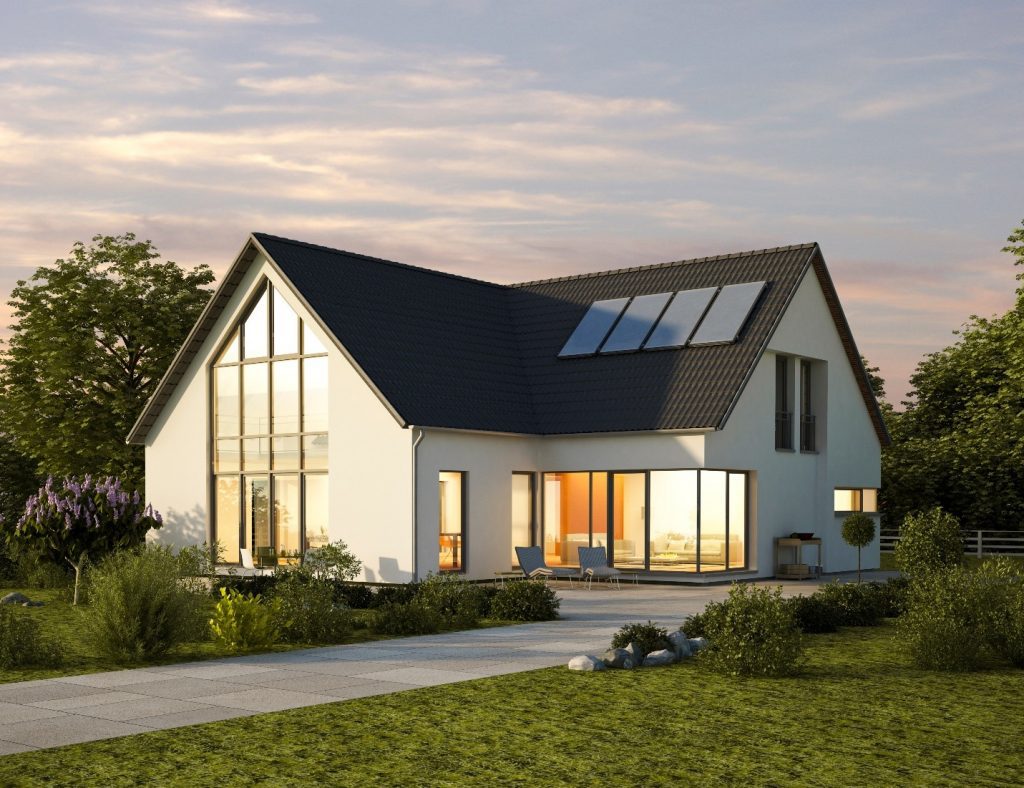
WHY SMALL HOME SOLAR SYSTEMS MAKE SENSE IN 2022
With both short- and long-term global energy prices tending only one way (up), small solar systems offer a number of compelling benefits for homeowners. Let’s take a look at some of their biggest ones.
The current global energy market
As a result of the European natural gas supply shortage, energy prices have increased significantly across the continent. In some places, average power prices have tripled in the last year.
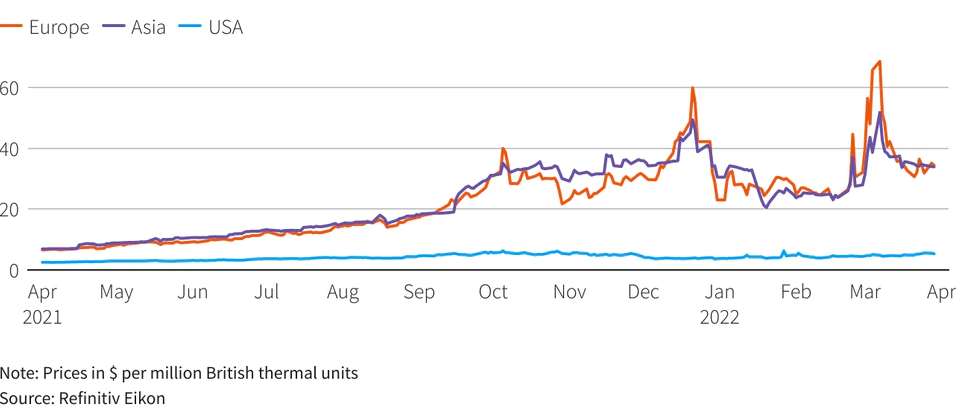
Rising electricity prices
More generally, electricity prices are rising across the globe as utilities scramble to meet growing demand. In the EU, for example, the average price of electricity has increased by more than 2.5% per year for the last decade.
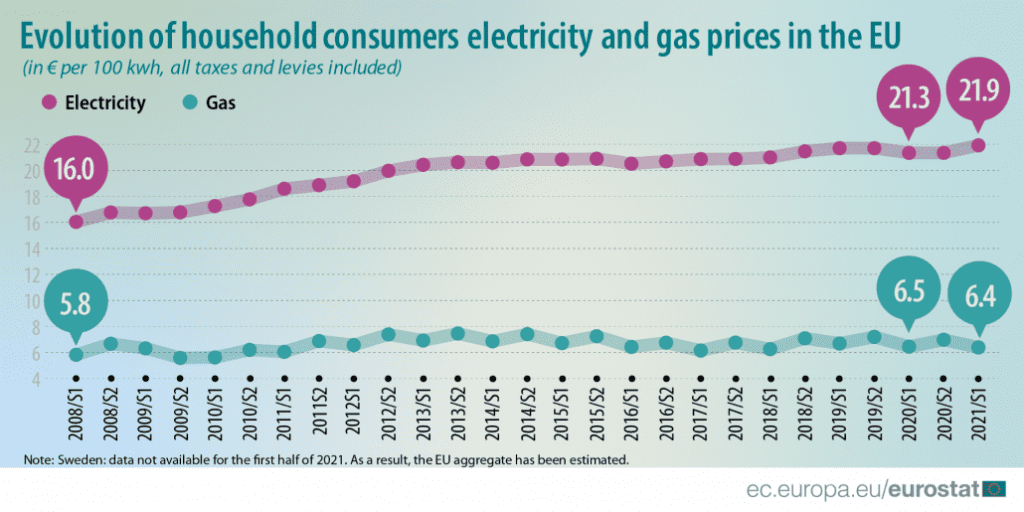
This trend isn’t slowing down any time soon. Energy demands are only going to continue to increase, as industries and populations grow and become more affluent. Installing a small solar system can help you begin to insulate yourself from future price increases, and keep your electricity bills under control. They’re also a great introduction if you’re considering a larger solar installation down the line.
Accommodative policies
In response to recent energy events, as well as the growing popularity of solar energy, more and more governments are introducing policies and incentives that make small solar systems more accessible to homeowners. In Germany, for example, solar system installations not exceeding 600W don’t have to be registered with the local energy department, leading to reduced bureaucratic hassle. In Austria, that limit is 800W. Many other countries are following, in an attempt to stimulate solar energy growth.
Additionally, many governments are now offering financial incentives in the form of tax breaks and rebates to homeowners who install small solar systems. These incentives can often offset a significant portion of the system’s initial cost, making solar energy an increasingly affordable option. Countries like Germany are also soon making it a requirement to have solar installed on certain types of buildings during construction and renovation.
How Hoymiles is helping with small home solar systems
Hoymiles’ 2-in-1 microinverters are the perfect fit for small residential solar systems. With their modest power requirements and easy installation, Hoymiles microinverters are the perfect DIY way to add solar power to your home and do it in a simple fashion that doesn’t involve a costly installation bill.
Our 2-in-1 microinverters come in a variety of power options – whether you need a 600W, 700W, or 800W microinverter – so you can find the right fit for your home whatever your power needs.

For example, if you’re buying two 300W–400W panels, you’d only need one HM-600/700/800 2-in-1 microinverter (because it connects to two panels at a time).
Want a more modular solar configuration? You can always buy two smaller 400W panels and two HM-300 1-in-1 microinverters.
Our microinverters are flexible and match up to common system capacities. And whatever your needs, our team is always available to help with installation and support.
THE BENEFITS OF BALCONY SOLAR SYSTEMS
Balcony solar systems are small, discrete, and affordable. They’re also easy to install – most systems can be set up in a matter of hours by a trained professional, and you can use one whether you live in a house, condo, or apartment. Let’s look at some of their benefits.
Energy independence
A small, modular balcony solar system helps provide your household with independence from the electrical grid. This means that, in times of high energy prices or emergencies, you’ll have a reliable source of power to keep your home running, and you can limit the amount of power you purchase from the grid to offset costs.
Short payback period
With an average payback period of just 2 to 3 years, balcony solar systems offer one of the quickest returns on investment of any renewable energy technology. And unlike other investments, such as installing insulation or a new roof, solar provides benefits long after the initial investment has been paid off – like reduced energy bills, a smaller carbon footprint, and an increased property value.
No need to report or register (in Germany or Austria)
As long as your balcony solar system remains firmly under a certain capacity (no more than 600W in Germany and 800W in Austria), you don’t need to report it to your local utility company or government. This makes the installation process quick and easy, removing the added hassle of paperwork, bureaucracy, or waiting periods.
Simple, plug-and-play installation
Because of their modest size and power requirements, small solar systems are generally very easy to install. Many systems can be set up in a few hours by a homeowner, or in even less time by a trained professional, and (as mentioned) they usually don’t require any permits or special approvals. This makes small solar systems a great option for homeowners who want to go solar but don’t have the wherewithal to invest in a large system.
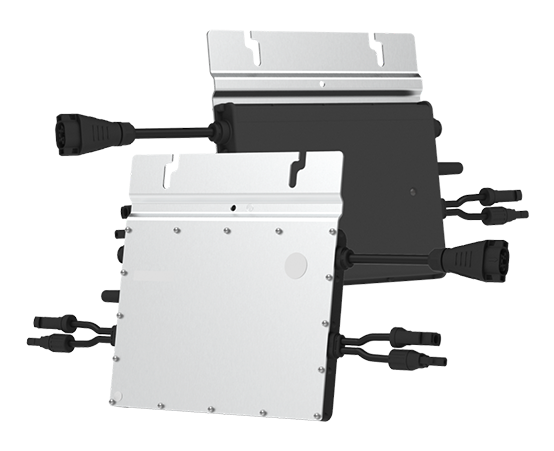
If you’re using a Hoymiles inverter – either our 2-in-1 or 4-in-1 microinverter – our installation process is even simpler; you’d just connect your microinverter to your solar panels using our supplied equipment, and you’re good to go.
Safe and homeowner-friendly
Solar can be intimidating if you’re a first-time user. But unlike fuels like natural gas or propane, there’s no risk of an explosion, and the panels themselves produce no emissions or pollutants. What’s more, they’re quiet, so you won’t even know they’re there – until you look at your cheaper electricity bill!
If you’re using a Hoymiles microinverter (like our HM-600, HM-700, or HM-800 models), our equipment comes with built-in surge protection and reactive power control. This prevents voltage spikes and reactively stabilizes voltage levels, improving distribution effectiveness and minimizing damage to electrical components over time.
Additionally, when plugged into an AC outlet, our microinverters modulate their voltage to below 34V to avoid shock hazards. We’ve made our microinverters safe and user-friendly: even if you accidentally touch the metal on the AC cable, there won’t be any danger.
HOW TO PLAN YOUR BALCONY SOLAR PANELS
Now that you understand what small solar systems are and how they work, let’s take a closer look at how you can practically install one on your property.
Calculate your energy usage
The first step is to calculate your energy usage, and use this to determine the type of balcony solar system your home needs.
This can be done by looking at a full year’s worth of monthly electricity bills and figuring out your average daily usage. Energy consumption is reported in kilowatt-hours (kWh). Keep in mind that you’ll need to account for both regular use and peak demand – the latter is typically highest in the winter months (because of more lighting and heat required).
If you’re having trouble finding this figure on your electricity bills, you can also work it out by simply looking at the figure on your meter at the beginning and end of the month. For example, if your meter at the end of February was 8,500, and at the end of March it reads 9,000, this means you’ve used 500kWh over the course of the month. Divide 500 by (roughly) 30, and you’ll get your daily usage for the month of March: 16.6kWh.
Get the necessary components
Now that you have an idea of how much energy you’re using on a daily basis, it’s time to determine the equipment you’ll need.
You’re probably not going to be able to offset the entirety of your energy needs with a balcony solar system, but the point is to increase your energy independence and offset costs. Figure out how much of your energy you’d like to produce via solar. From there, you can pick the solar panel with the power output you want and calculate the number of solar panels you’ll need.
For example, if you’re getting four good hours of sunlight per day, and you have a single solar panel rated for 600W, you can expect to generate approximately 2.4kWh. This would mean approximately 15% of your energy needs would be handled via solar (assuming 16.6kWh of usage per day). Make sure to use a sunlight calculator to determine how much sunlight your area receives on average.
Want a more in-depth walkthrough? Check out our guide on How Many Solar Panels Do You Need?.
Once you’ve determined what you’re looking for, it’s on to getting the right components.
Solar panels (with suitable power output)
For balcony solar systems, most homeowners settle on a solar panel with a power output of between 300W and 600W. Depending on the size of your balcony and what you’re comfortable with, you could get one or more. Note that this will impact the number of microinverters you need in the next step.
Microinverters
Microinverters take the energy generated by your balcony solar panels and convert it into a usable form. They should be small and easy to install, and they come in many configurations: 1-in-1 (which means one microinverter per solar panel), 2-in-1, and even 4-in-1.
Hoymiles’ 2-in-1 microinverters, like our HM-700 and HM-800 series, are purpose-built for small-capacity solar installation, and are thus an ideal choice for balcony solar systems. They’re modular, efficient, and safe. Assuming your average daily energy usage is 16kWh, with an HM-800 2-in-1 microinverter, two 400W solar panels could cover upwards of 20% of your energy needs.
The Hoymiles 600W inverter, 700W inverter, and 800W inverter are also built to make your payback period as short as possible:
- With other microinverters, you need to factor in the cost of replacing or repairing equipment into the overall cost of your system. Our 12-year warranty (which can be extended to 25 years) means that, once you’ve made your upfront investment, you won’t need to worry about buying replacement equipment – making your system less expensive in the long term.
- Microinverter systems need a bigger upfront investment than string systems, but they produce 5-30% more power. That means you’ll earn back more of your investment in less time.
Additionally, our HM 2-in-1 series can be plugged into a wall outlet to provide your home with simple, sustainable power. We make it easy to go green (and save on your energy bills while doing it!).

Step-by-step installation guide
Now that you’ve determined your equipment needs, let’s provide a light overview of how to practically install balcony solar panels. If you want a more detailed, in-depth walkthrough, check out our leaflet.
1. Choose where to place your balcony solar panels. Look for areas that maximize the amount of consistent light you’d be getting, and make sure a wall outlet would be accessible.
2. Orient your solar panels so that they’re approximately perpendicular to the area of maximum sunlight exposure.
3. Connect your microinverter. If you’re using a Hoymiles HM-series microinverter, this is as simple as plug and play.
4. Connect the configuration to a wall outlet. Hoymiles’ HM-series microinverters come with built-in surge protection and reactive power controls to maximize safety.
CHOOSE HOYMILES FOR SMALL HOME SOLAR SYSTEMS
Our HM-series microinverters can help homeowners with a full range of energy needs. Whether you’re looking to install a particularly small residential solar system or want to retrofit your entire home with renewable energy, Hoymiles has you covered. Our microinverters are efficient, flexible, and easy to install – perfect for any small solar system.
4-in-1 microinverters
In addition to our popular 2-in-1 microinverter line, our HM-series 4-in-1 microinverters are also quickly becoming a favorite among homeowners as well as business owners.
These versatile microinverters can be used in a variety of small solar system set-ups, including carports, courtyard systems, and rooftops. Whatever your installation needs, Hoymiles has you covered. Our full product line-up can meet any kind of installation scenarios, whether it’s DIY or professionally managed.
Standard warranty
We know how important it is to have confidence in your solar energy system. That’s why we offer a standard 12-year warranty on all of our microinverters (extendable to 25 years) – one of the longest warranties in the industry.
Our products are reliable and have double the standard lifespan of microinverters, so you can be sure your solar system will keep running for years to come.
Next-generation monitoring
Our engineers have packed decades of experience into our next-generation monitoring software. You get module-level performance data for every inverter in your system, so you can keep an eye on your solar energy production at all times with precision and high fidelity.
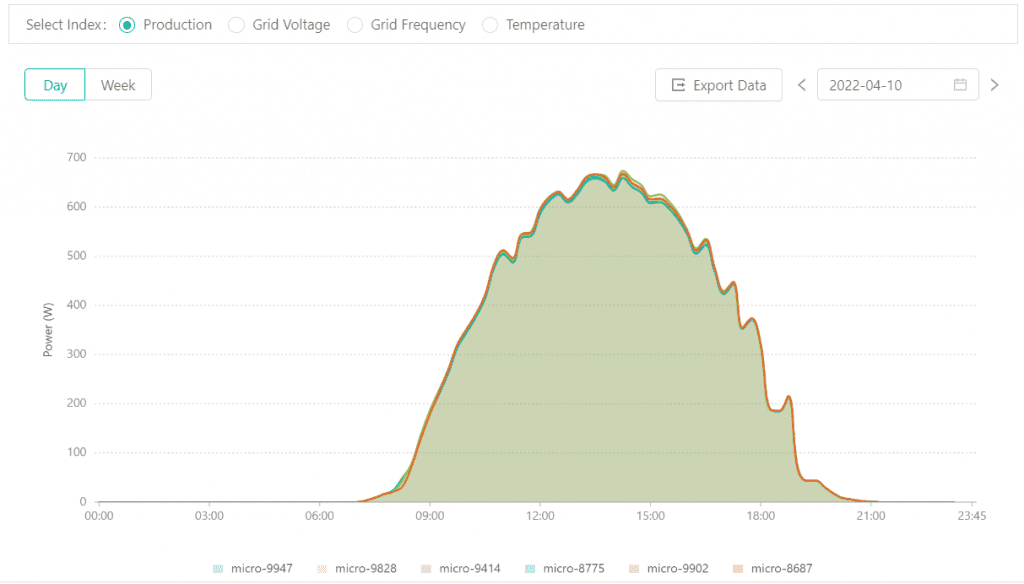
This includes detailed information on power levels over the course of the day, as seen above. Power production of each microinverter is closely tracked, which you can use to diagnose and optimize your solar system performance.
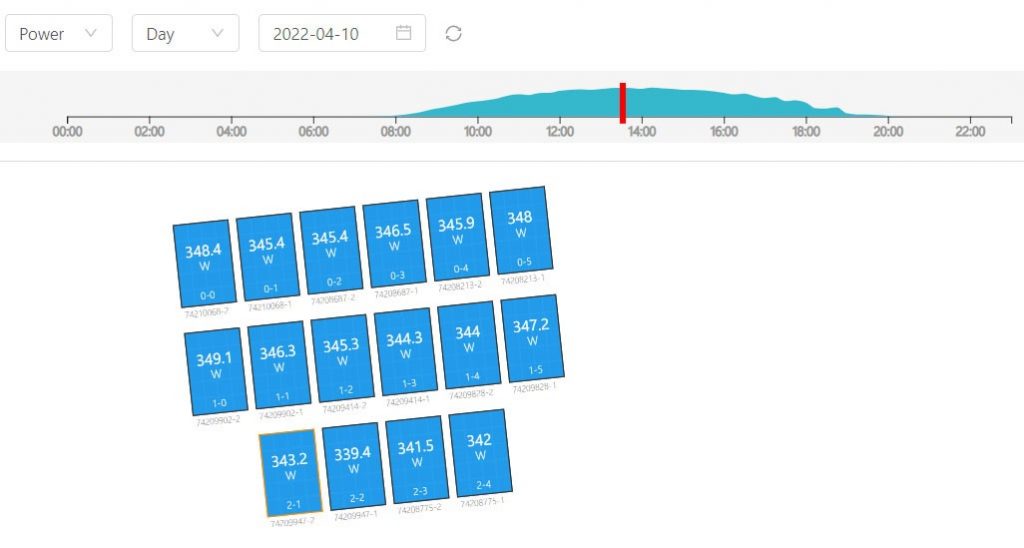
This picture illustrates how each panel’s performance is tracked thanks to our accurate MPPT (maximum power point tracking). It also captures how modules are actually placed on site.
Additionally, through the use of our data transfer units (DTUs) and our S-Miles Cloud monitoring software, you’ll have 24/7 access to your solar energy data – perfect for keeping on top of your system at all times.
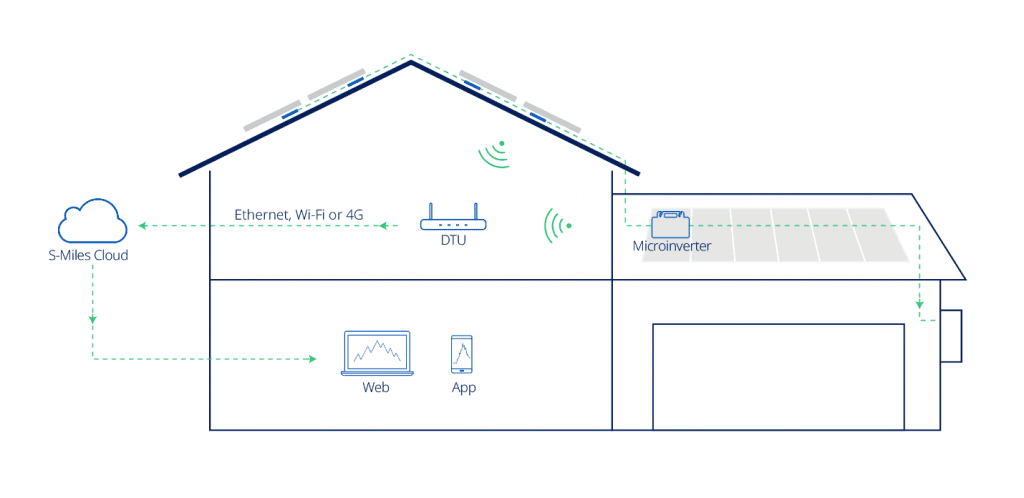
Want to start your small home solar journey today? Simply contact our sales team at sales@hoymiles.com, and one of our representatives will walk you through the process!

